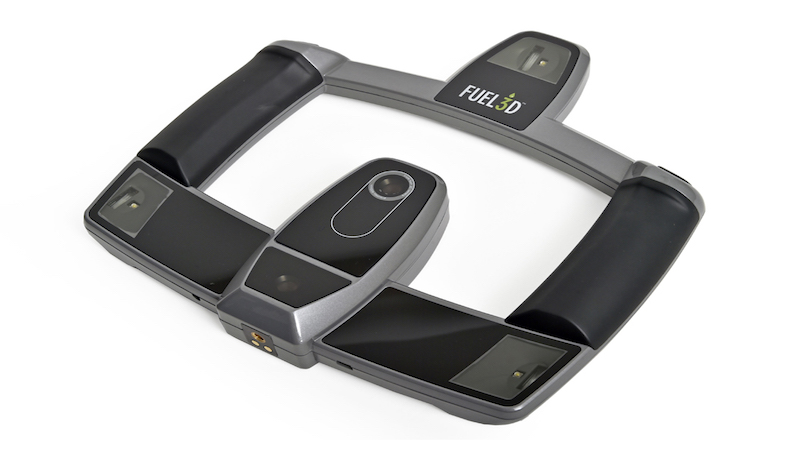Fuel 3D Scanify Scanner: An All-Round 3D Scanner

A UK-based manufacturer of 3D capturing technologies, Fuel 3D, just recently released a new 3D printer. The Scanify is an interesting product. It is very different from other scanners. And although it’s marketed as an all-round 3D scanner, it’s only usable for a few specific purposes.
The devices comes in a very green box with Apple-ish attention to detail. The box contains the device, a power adapter with wall socket add-on, a USB cable, Quick Start Guide and tree target discs.
A Portable Device.
The Fuel3D Scanify Scanner is a portable device. It touts impressive feature specifications and versatility. This allows it to perform a wide range of jobs. This unit uses a dual-laser stereo camera for easier capture of high-resolution images. It is combined with its companion application for editing scanned images. With this device, you can quickly expedite the process of 3D modeling and printing.
This is a handheld 3D laser scanner capable of capturing a 3D surface with numerous physical and color measurements. It comes with the ability to capture a full 3D image within a tenth of a second with detail of down to 350 microns, or 0.25 millimeters. When you complete a scan, it takes an average of 30 seconds for the device to compile the scan and make it available for use. Once available, you can export each scan to STL, OBJ and PLY formats. This enables easy editing in modeling applications via an attachable USB cable.
Carefully Manufactured.
The device itself is manufactured with the same amount of care as the packaging. It’s light-weight, but rock solid plastic with rubber hand grips that photographers will recognize from DSLR cameras. The same is true for the large shutter buttons and the standard tripod thread.
LED Guide Lights.
The lights you see are the LED Guide Lights. Next to each is a Xenon flash. In the white outline in the center there’s an RGB camera. Another is located in the bottom-center part under a slight angle. They are both 3.5 megapixel cameras. You can see the power cord and USB cable sticking out of the bottom.
Different From Other Scanners.
This is where the Scanify differs from other 3D scanners. It has no lasers or a projector that beams infrared or visible light patterns. It makes use of photogrammetry algorithms to distill depth information from multiple photos, instead of depth-sensing technologies. All these are taken within a second. This is the same technology used in software only reality capture applications and mobile 3D scanning apps. The Scanify falls somewhere between a digital photo camera and a handheld 3D scanner. It is capable of capturing objects from all sides in a continuous motion.
The advantage of this is speed. It captures a single 3D image in a split-second. This doesn’t require the subject to keep still. Photogrammetry usually delivers higher-quality 3D geometry than entry-level 3D scanners. This is another advantage.
Simple And Easy To Connect.
Connection-wise it’s plain simple. You just have to plug the power supply into a wall socket and the USB cable into a computer. Fuel 3D does offer models of a handheld holder and a 45° stand. But the fact that buyers have to 3D print these themselves is a weird contrast for such a polished device.
Fluidly Working Software.
Fuel3D’s corresponding software is easy to use. It works fluidly with the scanner. The software generates a 3D color data file. It allows some basic editing functionality prior to actually exporting your image. You can trim unnecessary areas, adjust the resolution and tinker around with saving in various 3D file formats. You will require a Mac, Windows 7 or higher, 2GB of RAM and a dual-core processor to run the Fuel 3D software. The software helps it make easy to use scans for a number of different purposes. These scans can be used in 3D printing, full-color on screen rendering and many other uses in games and applications.

Nisarg is the Business Development Manager at Nimblechapps, a top mobile game development company and has been with the organisation since its inception in 2014. He likes to update his knowledge on changing trends in technology and marketing and pens his thoughts regarding the same on various blogs and LinkedIn.




